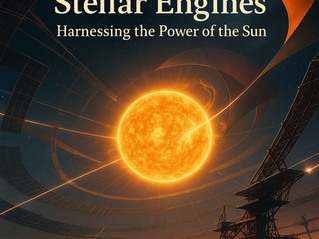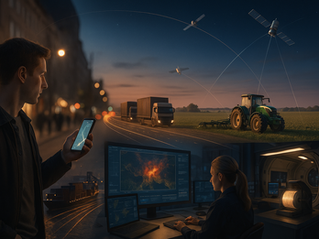Exploring the Future of Space Technology for Education and Beyond
- Phystroid

- Jul 25
- 3 min read
Updated: Jul 28
In recent years, the exploration and development of space technology have surged. As we expand our understanding of the universe, we also begin to understand the profound implications these advancements can have on education and various sectors beyond. Innovations in space tech not only captivate the imaginations of students but also offer practical tools and methodologies applicable in everyday life.

Advancements in Space Tech
The advancements in space technology are not just limited to mere exploration. They encompass education, communication, environmental monitoring, and much more. For instance, satellite technology has revolutionized how we gather data about our planet. Earth observation satellites monitor environmental changes, climate patterns, and natural disasters, providing vital information for researchers and governments alike.
Moreover, the educational potential of these advancements is significant. By incorporating space technology into the classroom, educators can create interactive and engaging learning experiences. Programs such as NASA’s Artemis and SpaceX's Starlink initiative offer students a glimpse into the future of space exploration and its implications for global connectivity.

What do you mean by space technology?
Space technology encompasses any technology used to facilitate space exploration and research. This could include satellites, space vehicles, and technologies that support life in space. Essentially, space technology is a blend of engineering, innovation, and scientific knowledge aimed at exploring outer space and improving life back on Earth.
For example, GPS technology, widely used in navigation and mapping, originated from satellite technology. This advancement has redefined how we travel and interact with our environment. Additionally, technologies developed for space missions, such as water purification systems, have found practical applications in disaster-stricken areas and remote locations, showcasing their real-world benefits.
The Role of Space Technology in Education
As we look ahead, the integration of space technology into educational curricula becomes increasingly essential. By providing students with hands-on experience in STEAM (Science, Technology, Engineering, Arts, and Mathematics), educational institutions can prepare the next generation for careers in a variety of tech-driven fields.
For example, programs such as Space Camp offer students the opportunity to learn about astronaut training, rocketry, and robotics. These experiential learning opportunities ignite passion and curiosity about science and technology, encouraging students to pursue studies in related fields.
Using simulations and virtual reality experiences, educators can transport students to outer space, allowing them to interact with and learn from their surroundings. This innovative approach not only enhances understanding but also emphasizes the creativity and excitement associated with space exploration.

The Future Workforce and Space Technology
As technologies evolve, the job market is also transforming. Professions related to space technology are on the rise, and educational institutions must align their programs to ensure students are prepared for future careers. With the growing demand for skilled professionals in aerospace engineering, data analysis, and robotics, universities and colleges are responding accordingly.
To thrive in this new landscape, students should develop critical thinking and problem-solving skills alongside technical abilities. Apprenticeship programs and internships in the space sector can provide hands-on experience and boost employability.
Moreover, partnerships between educational institutions and space agencies or tech companies can create frameworks for internships, research projects, and mentorship opportunities. Such collaborations can bridge the gap between academia and industry, allowing students to explore real-world applications of their studies.
Accessibility and Global Impact
One of the most significant trends in space technology is the push for accessible space research. As companies like SpaceX and Blue Origin continue to innovate, the barriers to entry for space exploration have diminished. This shift is opening doors for developing countries to participate in space research and technology development, fostering global collaboration.
By sharing resources and knowledge across borders, nations can work together to tackle pressing global issues. Whether it’s climate change, health crises, or natural disaster response, space technology provides tools for monitoring and addressing these challenges effectively.
Furthermore, when educational institutions around the world harness space tech, students everywhere can benefit. Programs developed in one country can be adapted and implemented globally, promoting a culture of collaboration and shared learning.
Inspiring a New Generation
In conclusion, the future of space technology holds remarkable promise for education and beyond. By embracing advancements in space tech, we are not just paving the way for exploration; we are also inspiring and empowering the next generation to dream big.
As we continue to innovate and explore, it's vital to ensure that these technologies are accessible and beneficial to all. The potential for collaboration across borders, disciplines, and communities is vast, and harnessing this power can lead to a brighter, more connected future. It’s time to imagine what we can achieve together, reaching for the stars and, ultimately, impacting our planet positively.












































































































Comments